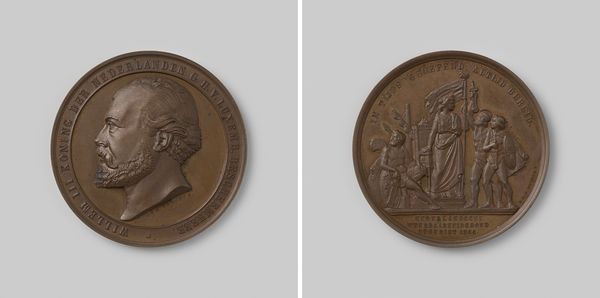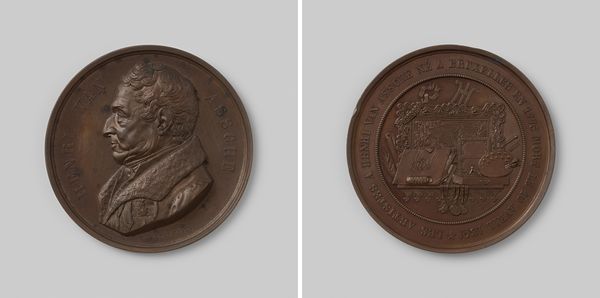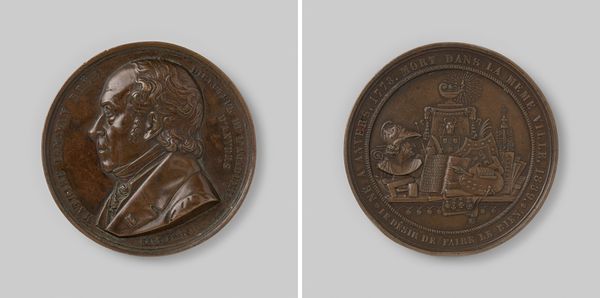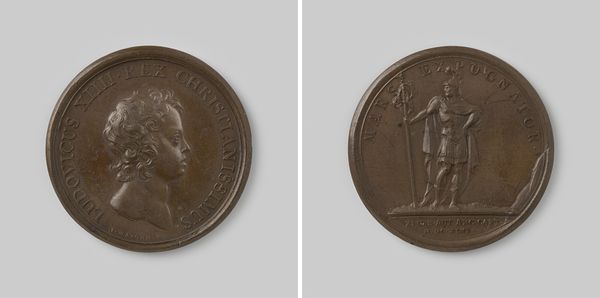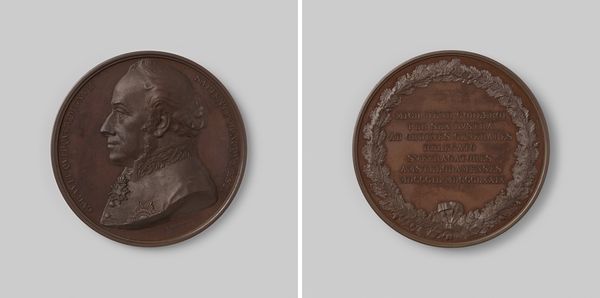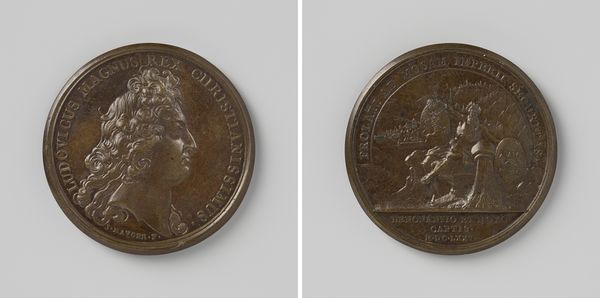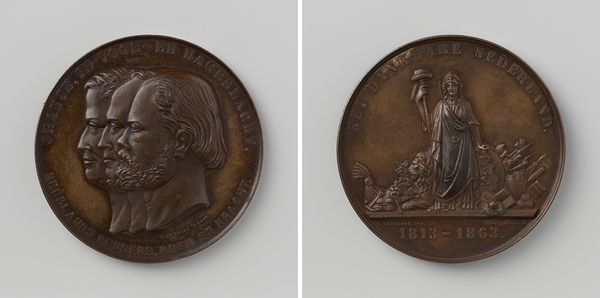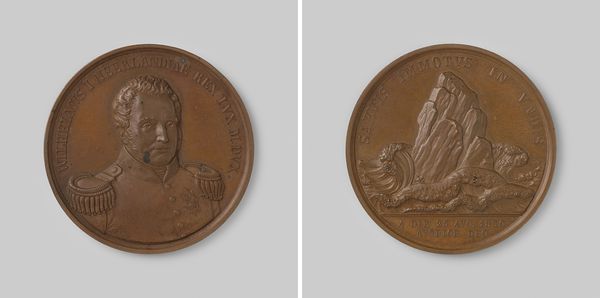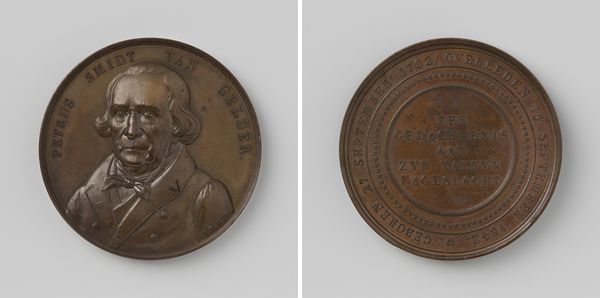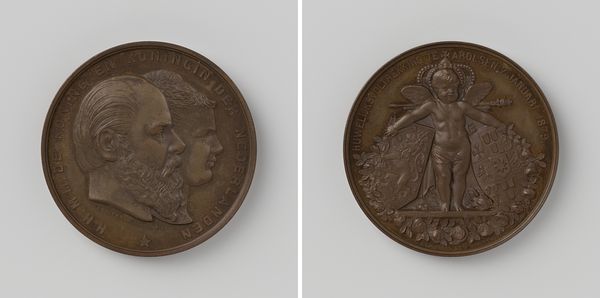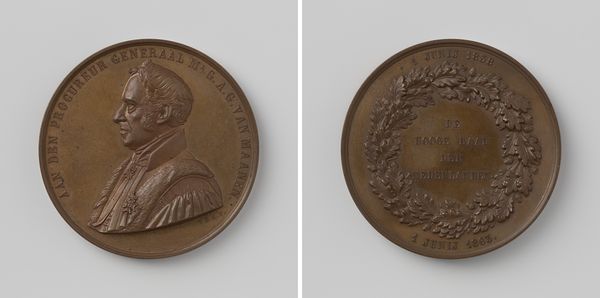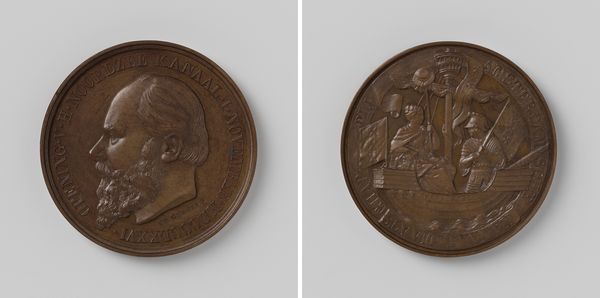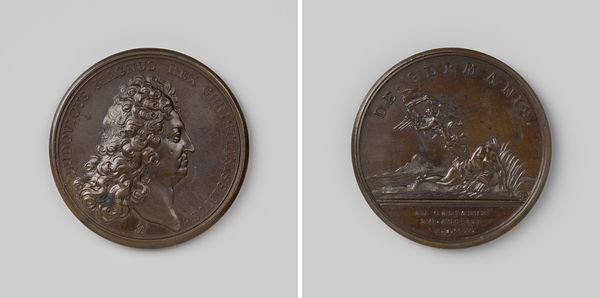
relief, bronze
#
medal
#
sculpture
#
relief
#
bronze
#
history-painting
#
academic-art
Dimensions: diameter 6.6 cm, weight 123.03 gr
Copyright: Rijks Museum: Open Domain
Curator: This bronze relief, created in 1867, commemorates Jacob Baart de la Faille's 50th anniversary as a doctor. Editor: The solemnity of the imagery really strikes me— the figures have such a formal, almost distant quality to them. Curator: It certainly reflects the academic art style of the period. We see a portrait of Jacob Baart de la Faille on one side and an allegorical scene on the other. The materials and method of production tell us much about this object as an artifact: bronze was the dominant material of its time, so it feels rooted in very particular production capacities, modes of labor. Editor: Absolutely, and those historical layers are so rich. Consider the visual language employed on the relief's reverse—it speaks volumes about the values and belief systems operating at the time. It's not just a celebration of academic achievement; it's an assertion of particular social values. The rendering of the nude kneeling person really emphasizes the position they were in, on the edge of what the society accepts as necessary, and begging. Curator: And what of the function of the relief itself? The minting of bronze objects, whether medallions, medals or statuary played a central role in public sculpture. What were people consuming and what types of materials did people think was the perfect thing to produce? This example is very formal. It's not about art for art's sake. It memorializes the contributions of individuals in this format, so a very accessible consumer model was crucial. Editor: And how those achievements are framed historically is significant. The imagery actively constructs Jacob Baart de la Faille as a certain type of authority figure, with that visual, hierarchical relation to this more 'average person'—which may have had implications depending on that particular population being affected by these people. Curator: By exploring the methods of producing, and consuming materials in relation to public identity we start to see a very clear example of that time's value and class structure, as something accessible to every consumer. Editor: It's a small object but it certainly contains a lot about the society of that time. Thanks to the way in which he can continue his work.
Comments
No comments
Be the first to comment and join the conversation on the ultimate creative platform.
